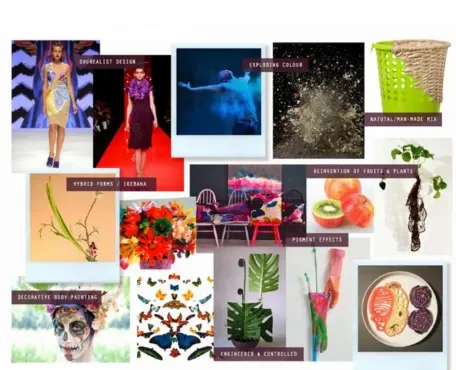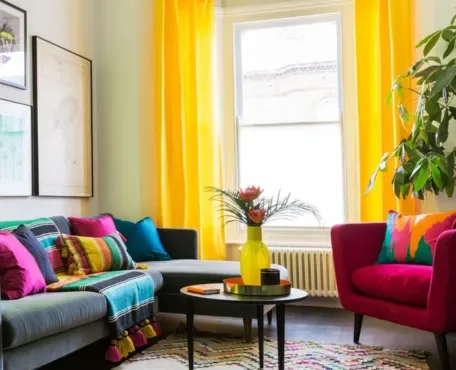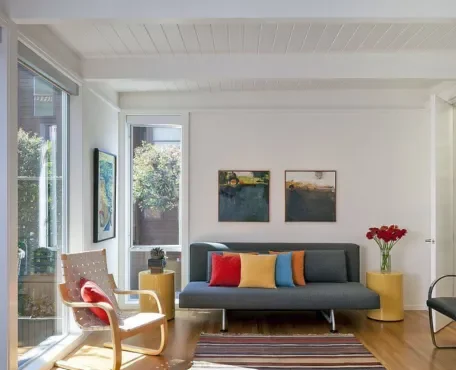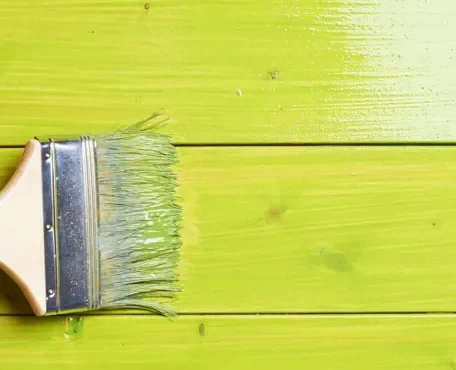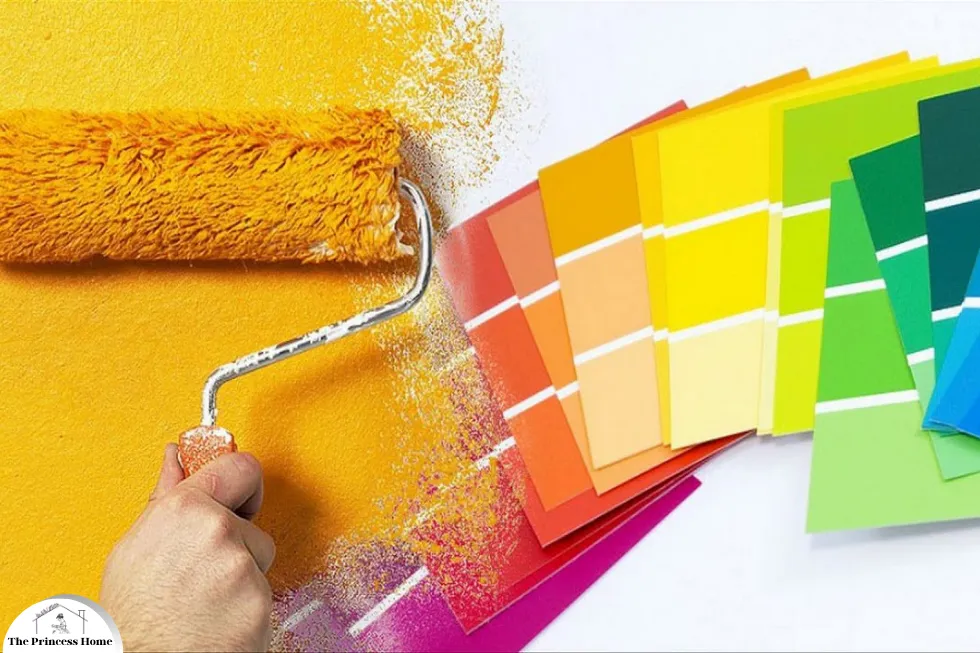
Color is a powerful tool in interior design, capable of transforming a space and evoking a range of emotions. Whether you prefer bold and vibrant hues or serene and muted tones, incorporating color into your home decor can enhance the aesthetic appeal and create a personalized environment that reflects your style and personality. In this comprehensive guide, we’ll explore various techniques for incorporating color through paint, wallpaper, fabrics, and accessories, along with tips for selecting the right colors and creating harmonious color schemes.
Incorporating color through paint, wallpaper, fabrics, and accessories is a fantastic way to breathe life and personality into any space.
Here are some techniques to consider:
Color is a powerful tool in interior design, capable of transforming a space and evoking a range of emotions. Whether you prefer bold and vibrant hues or serene and muted tones, incorporating color into your home decor can enhance the aesthetic appeal and create a personalized environment that reflects your style and personality. In this comprehensive guide, we’ll explore various techniques for incorporating color through paint, wallpaper, fabrics, and accessories, along with tips for selecting the right colors and creating harmonious color schemes.
Choosing the Right Colors:
Before diving into the specifics of incorporating color through various mediums, it’s essential to understand the basics of color theory and how different hues can impact the mood and atmosphere of a room. Consider the following factors when choosing colors for your space:
Color Psychology: Each color has its own psychological effects and associations. For example, blue is calming and promotes relaxation, while red is energizing and stimulates conversation. Think about the mood you want to create in each room and select colors accordingly.
Natural Light: The amount of natural light in a room can affect how colors appear. Rooms with ample sunlight may benefit from cooler tones, while rooms with limited natural light may feel warmer and cozier with warmer hues.
Existing Decor: Take into account the colors of your existing furniture, flooring, and decor when selecting paint colors and fabrics. Choose colors that complement or contrast with the existing elements to create a cohesive and harmonious look.
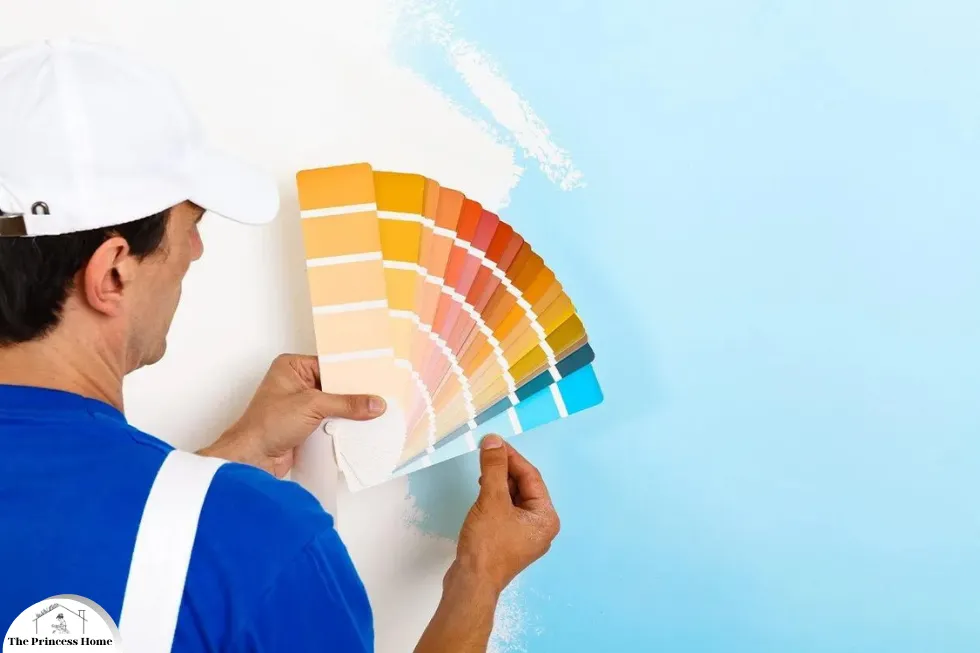
Incorporating Color Through Paint:
Painting walls is one of the most common and effective ways to incorporate color into a space. Here are some techniques for using paint to add color:
Color Blocking: Instead of painting all the walls in a room the same color, consider using multiple colors to create visual interest. You can paint one wall in a bold color and the remaining walls in a complementary or neutral shade.
Accent Walls: Choose one wall in a room to serve as an accent wall and paint it in a vibrant or contrasting color. This creates a focal point and adds a pop of color without overwhelming the space.
Faux Finishes: Experiment with different painting techniques such as sponging, ragging, or stippling to add texture and depth to the walls. These techniques can create subtle variations in color and lend a unique look to the room.
Paint and wallpaper are two popular options for adding color and personality to interior spaces. While both serve similar purposes, they each have their own unique characteristics and advantages. Here’s a breakdown of paint and wallpaper to help you decide which option is best for your next home improvement project:
Paint:
Versatility: Paint is incredibly versatile and can be used on a variety of surfaces, including walls, ceilings, trim, and furniture. It comes in a wide range of colors and finishes, from matte to high gloss, allowing for endless customization options.
Ease of Application: Painting is a relatively straightforward DIY project that can be completed with basic tools and equipment. With proper preparation and technique, you can achieve professional-looking results without the need for professional help.
Affordability: In general, paint tends to be more budget-friendly than wallpaper, especially when considering the cost of materials and installation. Additionally, because paint is applied directly to the surface, there’s no need for additional materials like adhesive or primer.
Ease of Maintenance: Painted surfaces are easy to clean and maintain, making them ideal for high-traffic areas such as kitchens, bathrooms, and hallways. Minor scuffs and marks can be easily touched up with a fresh coat of paint.
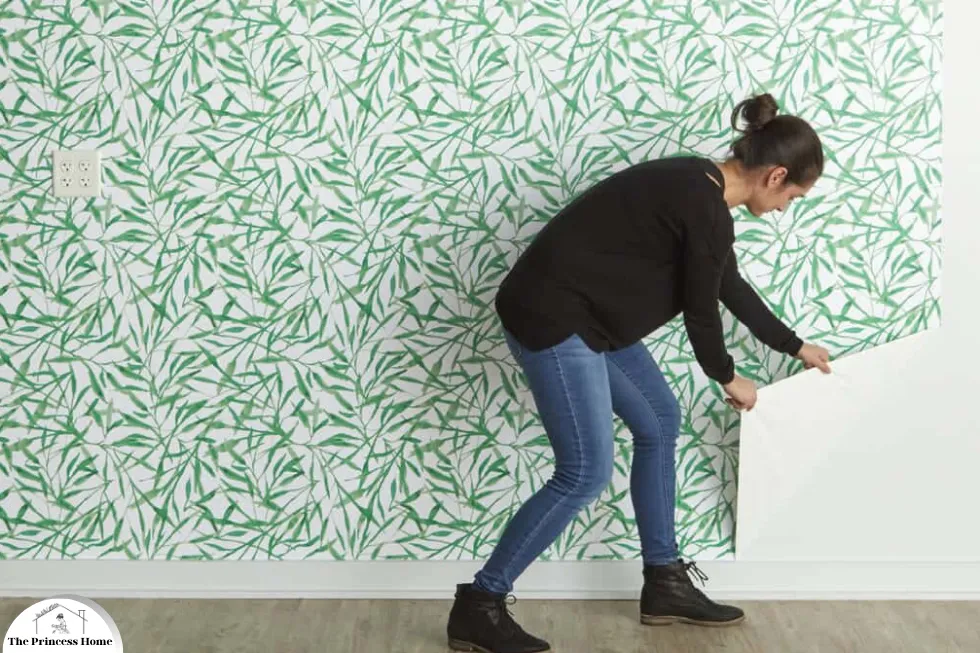
Incorporating Color Through Wallpaper:
Incorporating color through wallpaper is a versatile and impactful way to add personality and style to any room. Wallpaper comes in a wide range of colors, patterns, and textures, making it easy to customize the look and feel of your space. Here’s how to effectively incorporate color through wallpaper:
Statement Wall: Use wallpaper to create a statement wall in a room. Choose a bold print or pattern that reflects your style and complements the existing decor. Wallpaper can add visual interest and personality to an otherwise plain space.
Accent Ceilings: Don’t overlook the ceiling when considering wallpaper options. A patterned or textured wallpaper on the ceiling can add drama and visual intrigue to a room.
Temporary Solutions: If you’re hesitant to commit to permanent wallpaper, consider temporary options such as peel-and-stick wallpaper or wall decals. These removable solutions allow you to experiment with different patterns and colors without the hassle of traditional wallpaper installation.
Wallpaper:
Pattern and Texture: Wallpaper offers a wide range of patterns, textures, and designs that can add depth and visual interest to a room. From bold florals to subtle geometric prints, wallpaper allows for endless creativity and customization options.
Durability: While paint may chip or fade over time, wallpaper is generally more durable and long-lasting. High-quality wallpaper can withstand wear and tear, making it a practical choice for busy households or commercial spaces.
Statement Feature: Wallpaper can serve as a statement feature in a room, instantly transforming the space and creating a focal point. Whether used on an accent wall or throughout an entire room, wallpaper has the power to make a bold design statement.
Professional Installation: Unlike painting, installing wallpaper requires specialized skills and techniques to ensure a smooth and seamless finish. While DIY installation is possible, hiring a professional installer is often recommended to achieve the best results.
wallpaper power:
Wallpaper offers a versatile and impactful way to introduce color and pattern into a room’s decor. Regardless of whether you choose a bold print or a more subtle texture, wallpaper has the power to instantly transform the ambiance of a space. Here’s why it’s such a valuable option:
1.Versatility:
One of the greatest strengths of wallpaper is its versatility. It can be used in a variety of ways to achieve different effects. For example, you can cover an entire room with wallpaper for a dramatic statement, or you can use it on a single accent wall to create a focal point. Additionally, wallpaper can be applied to ceilings or even inside bookshelves to add unexpected pops of color and pattern.
2.Color and Pattern:
Wallpaper comes in an extensive range of colors, patterns, and textures, making it easy to find the perfect option to suit your style and preferences. Whether you’re drawn to bold florals, geometric prints, or understated textures, there’s a wallpaper design to suit every taste.
3.Instant Transformation:
Unlike painting, which requires time-consuming preparation and multiple coats, wallpaper can provide an instant transformation to a room. With just one application, you can completely change the look and feel of the space, adding depth and personality in the process.
4.Texture and Dimension:
Wallpaper isn’t just about color and pattern—it can also add texture and dimension to a room. Whether you choose a raised texture or a subtle sheen, textured wallpaper can create visual interest and tactile appeal, enhancing the overall design scheme.
5.Ease of Installation:
While wallpaper installation may seem daunting, modern wallpaper options often come with user-friendly features such as pre-pasted backing or peel-and-stick adhesives, making the installation process much simpler than in the past. However, for more intricate patterns or large-scale installations, it’s advisable to hire a professional installer to ensure a flawless finish.
In conclusion, wallpaper is a versatile and effective option for adding color, pattern, and texture to a room’s decor. Whether used as a statement feature or a subtle backdrop, wallpaper has the ability to instantly transform a space and create a visually stunning environment. With so many options to choose from, it’s easy to find the perfect wallpaper to suit your style and elevate your home decor.
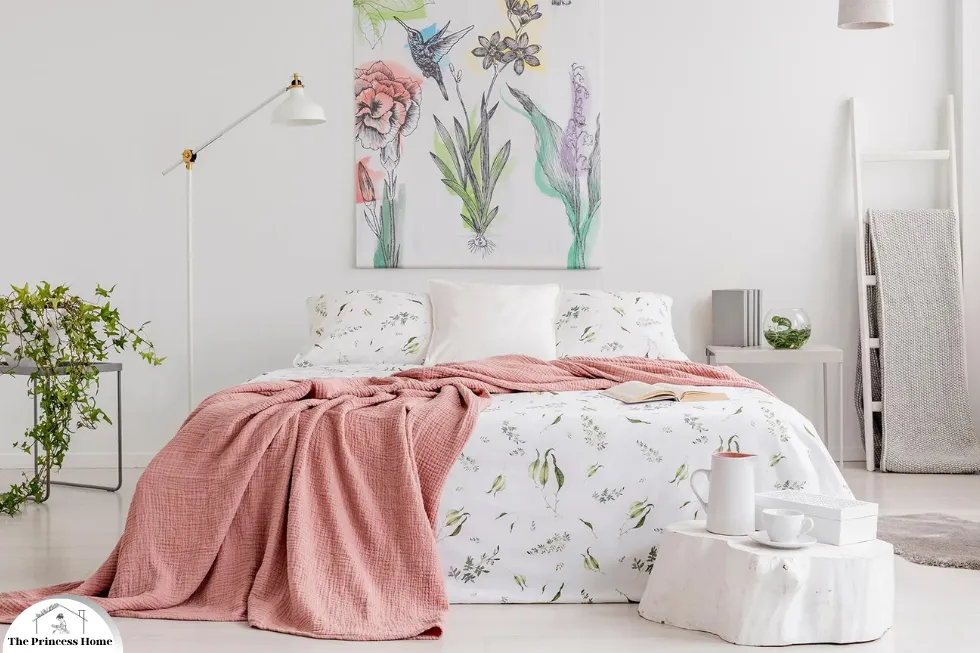
Incorporating Color Through Fabrics:
Fabrics such as curtains, upholstery, throw pillows, and rugs are another excellent way to add color to a room. Here’s how to incorporate fabrics effectively:
Mix and Match: Experiment with different fabric patterns and textures to add visual interest to a room. Mix florals with stripes or solids with geometric prints to create a dynamic and layered look.
Colorful Accents: Use colorful throw pillows, blankets, and area rugs to introduce pops of color into a neutral or monochromatic space. These small accents can instantly brighten up a room and add personality.
Window Treatments: Choose curtains or drapes in a vibrant color or pattern to frame windows and add drama to a room. Curtains can also help tie together the color scheme and create a cohesive look.
Fabric Selection:
Introduce color through fabrics such as curtains, upholstery, throw pillows, and rugs. Choose fabrics with patterns or prints that incorporate your desired color palette to tie the room together. Mixing different textures and patterns adds visual interest and depth.
Fabric selection is a critical aspect of interior design, offering a versatile means of introducing color, texture, and personality into a room. From curtains and upholstery to throw pillows and rugs, fabrics play a pivotal role in shaping the ambiance and aesthetic of a space. Here’s why fabric selection matters and how to make the most of it:
1.Color Introduction:
Fabrics provide an excellent opportunity to infuse color into a room’s decor. Whether you prefer vibrant hues or muted tones, fabrics offer endless possibilities for incorporating your desired color palette. Choose fabrics with patterns or prints that complement the overall design scheme and tie the room together harmoniously.
2.Pattern Play:
Patterns can add visual interest and depth to a room, and fabrics are the perfect medium for incorporating them. Mix and match different patterns, such as florals, stripes, or geometric prints, to create a dynamic and layered look. Just be sure to balance bold patterns with more subtle ones to avoid overwhelming the space.
3.Texture Variation:
Fabrics also introduce texture into a room, enhancing its tactile appeal. Mixing different textures, such as velvet, linen, and wool, adds richness and depth to the decor. Consider layering different textures to create contrast and visual intrigue, such as pairing a plush velvet sofa with a woven jute rug.
4.Coordinated Look:
Fabrics play a crucial role in tying together the various elements of a room to create a cohesive and coordinated look. Choose fabrics that complement the existing decor, from upholstery fabrics that match the sofa to throw pillows that pick up on accent colors in the artwork. Consistency in fabric choices helps create a unified and polished aesthetic.
5.Functional Considerations:
In addition to aesthetics, consider the functional aspects of fabrics when selecting them for your home. For example, opt for durable and easy-to-clean fabrics in high-traffic areas such as the living room or dining room. Additionally, consider the level of sunlight exposure when choosing fabrics for curtains or upholstery to prevent fading over time.
In conclusion, fabric selection is a crucial element of interior design that can significantly impact the look and feel of a room. By choosing fabrics that introduce color, pattern, and texture in a thoughtful and cohesive manner, you can create a visually stunning and inviting space that reflects your personal style and taste. Whether you prefer bold and vibrant or subtle and understated, fabrics offer endless possibilities for transforming your home into a place you love to be.
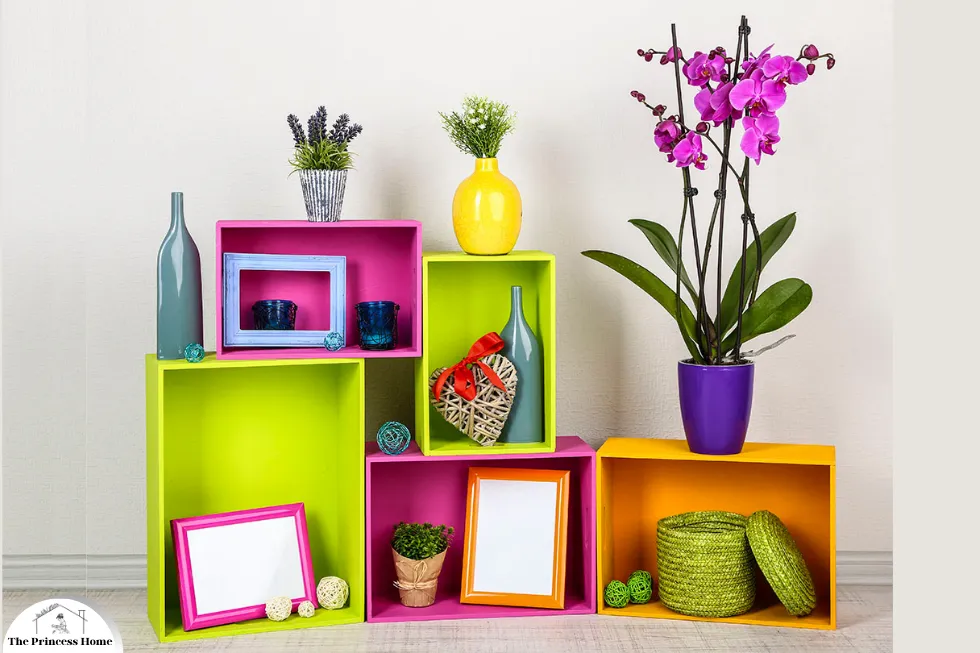
Incorporating Color Through Accessories:
Accessories such as artwork, vases, lamps, and decorative objects are the finishing touches that can tie a room together. Here’s how to incorporate accessories effectively:
Colorful Artwork: Hang colorful artwork or photographs on the walls to add personality and visual interest to a room. Choose pieces that incorporate your desired color palette and reflect your style.
Decorative Objects: Display decorative objects such as vases, sculptures, and ceramics in vibrant colors to add pops of color to shelves, mantels, and tabletops.
Layering: Experiment with layering different colors and textures in your accessories to create depth and visual intrigue. Group accessories in clusters or arrange them in vignettes to create focal points in the room.
Accessories:
Incorporating color through accessories is an effective way to add vibrancy and personality to your home decor. Accessories such as artwork, vases, cushions, rugs, and decorative objects offer ample opportunities to infuse color into your space. Here are some tips on how to incorporate color through accessories in your home:
Choose Vibrant Accents:
Select accessories in bold and vibrant colors to make a statement in your space. Look for items such as throw pillows, artwork, or vases in hues that complement your existing color scheme or add a pop of contrast.
Mix and Match:
Experiment with mixing different colors and patterns in your accessories to create visual interest. Pair complementary colors or mix patterns like stripes, florals, and geometrics for a dynamic and eclectic look.
Use Colorful Artwork:
Hang colorful artwork on your walls to inject color and personality into the room. Whether it’s a painting, print, or photograph, artwork can serve as a focal point and tie together the color scheme of the space.
Incorporate Textiles:
Introduce color through textiles such as rugs, curtains, and throws. Opt for rugs with vibrant patterns or hues that complement your decor. Colorful curtains can add a sense of drama and warmth to a room, while throws in bold colors can liven up a neutral sofa or armchair.
Accessorize with Plants:
Greenery is an excellent way to add color and freshness to your home. Place potted plants or fresh flowers in colorful pots or vases to add a natural pop of color to your space.
Consider Seasonal Decor:
Rotate your accessories with the seasons to keep your space feeling fresh and inviting. Incorporate seasonal colors and motifs into your accessories to reflect the time of year, whether it’s warm hues for autumn or bright pastels for spring.
Don’t Forget About Lighting:
Lighting fixtures and lampshades can also contribute to your color scheme. Choose fixtures with colorful shades or bases to add an extra layer of color to your space.
Layer and Edit:
Experiment with layering accessories in different colors, textures, and heights to create visual depth. However, be mindful not to overcrowd your space. Edit your accessories periodically to keep the look cohesive and clutter-free.
By incorporating color through accessories, you can add personality and style to your home while creating a space that feels inviting and cohesive. Experiment with different colors, patterns, and textures to find the perfect combination that reflects your personal taste and enhances your living environment.
Conclusion:
Incorporating color into your home decor is a creative and rewarding process that allows you to express your personality and style. Whether you choose to paint walls, hang wallpaper, or add colorful accessories, don’t be afraid to experiment with different hues and combinations until you find a look that feels right for you. By following the techniques and tips outlined in this guide, you can create a vibrant and inviting space that you’ll love to call home.
Certainly! Here are some frequently asked questions related to incorporating color through paint, wallpaper, fabrics, and accessories, along with their answers:
Q1: How do I choose the right paint color for my room?
A: When choosing a paint color, consider factors such as the room’s natural light, existing furniture and decor, and the mood you want to create. It’s also helpful to test paint samples on the walls to see how they look in different lighting conditions before making a decision.
Q2: Can I mix different patterns and colors in the same room?
A: Yes, mixing patterns and colors can add visual interest to a room. To avoid overwhelming the space, stick to a cohesive color palette and vary the scale of patterns. For example, pair a large-scale floral print with a small geometric pattern for balance.
Q3: What are some tips for incorporating color in a small space?
A: In small spaces, opt for lighter shades of paint and fabrics to make the room feel more spacious. You can also use mirrors to reflect light and create the illusion of depth. Incorporating pops of color through accessories can add personality without overwhelming the space.
Q4: How can I update the color scheme of a room without completely redecorating?
A: You can easily update the color scheme of a room by swapping out accessories such as throw pillows, curtains, and artwork. Consider adding a new accent color or replacing existing accessories with ones that incorporate your desired color palette.
Q5: Is it possible to incorporate color in a rental property where painting walls might not be allowed?
A: Yes, there are several ways to add color to a rental property without painting the walls. You can use removable wallpaper, hang colorful artwork, or add vibrant textiles and accessories to bring personality to the space. Temporary solutions such as peel-and-stick decals or wall murals can also be used to add color without causing damage to the walls.
Q6: How can I ensure that the colors I choose for my home will complement each other?
A: To ensure that the colors in your home complement each other, consider creating a cohesive color palette based on the principles of color theory. Choose a dominant color as your base, then select complementary or analogous colors to create harmony throughout the space. Experiment with different combinations and test samples together to see how they interact before making a final decision.



